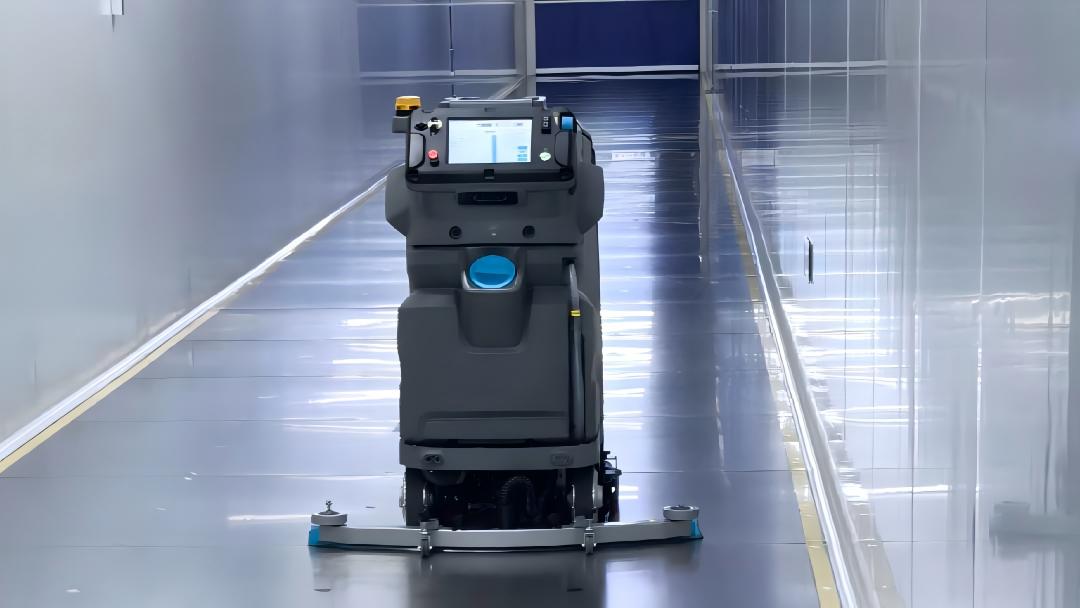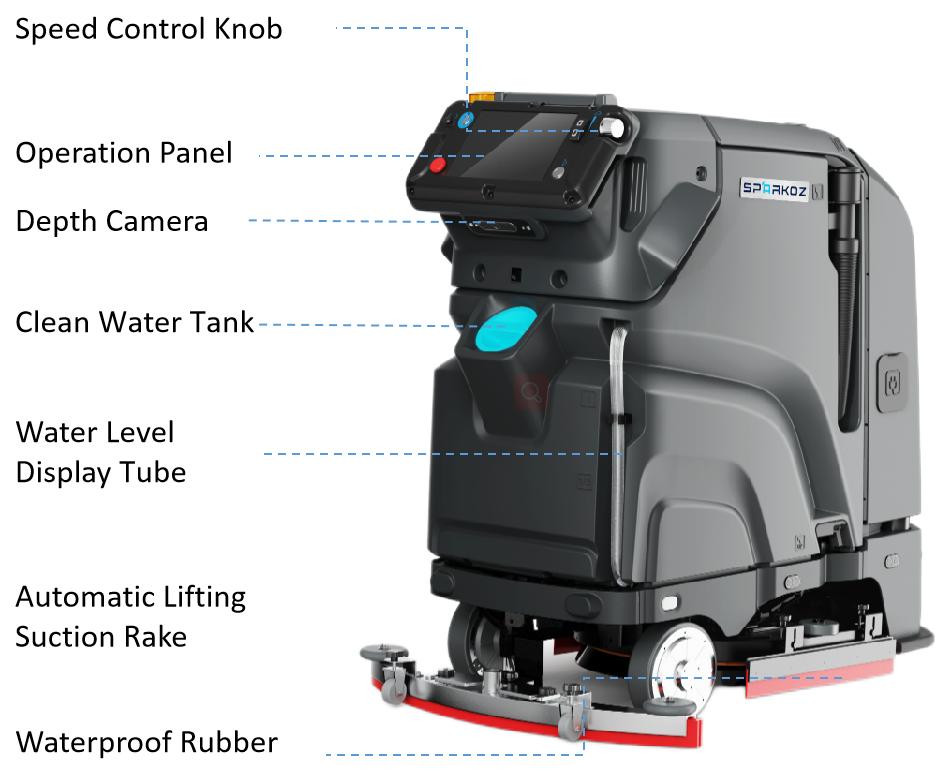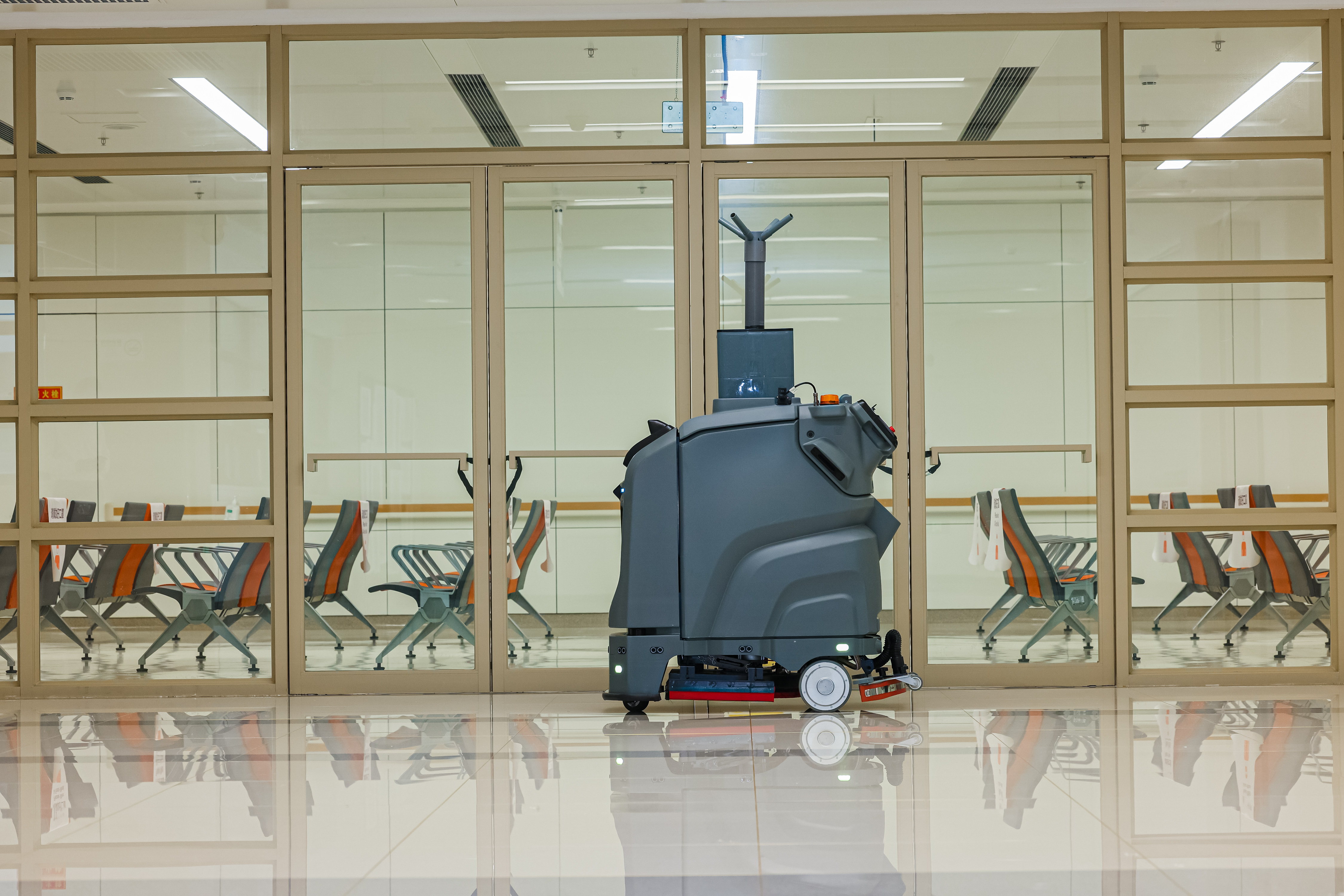
In today’s competitive industrial landscape, maintaining exceptional hygiene is a critical requirement for safety, productivity, and brand reputation. Whether in healthcare facilities, manufacturing plants, commercial centers, or educational institutions, cleanliness is a cornerstone of operational success.
With the rapid evolution of technology, industrial cleaning robots have emerged as a transformative solution, enabling fully automated cleaning processes that deliver consistent and reliable results. This article provides an in-depth look at industrial cleaning robots, explores their journey toward full automation, and details the multifaceted benefits they offer in meeting diverse cleanliness demands.
What Are Industrial Cleaning Robots?
Industrial cleaning robots are sophisticated autonomous machines specifically engineered to tackle the rigorous cleaning demands of large-scale facilities and complex environments. These AI-powered cleaning robots can perform a variety of tasks,including:
✅Scrubbing
✅Mopping
✅Vacuuming
✅Disinfecting
Equipped with advanced sensor technologies such as LiDAR and high-definition cameras, these robots can create digital maps of their surroundings to plan the most efficient cleaning routes. They navigate around obstacles in real time while adjusting cleaning methods dynamically based on floor type and contamination level.
Many models also integrate real-time data collection and customizable cleaning programs, ensuring that every environment—whether it requires delicate care or intensive deep cleaning—is maintained efficiently and consistently.


The Evolution Toward Full Automation
The shift from manual cleaning to fully automated robotic cleaning represents a major milestone in facility maintenance.In the past, cleaning large facilities was labor-intensive, often plagued by inconsistencies, inefficiency, and high labor costs.
Challenges of Traditional Cleaning Methods:
Inconsistent cleaning quality
High operational costs
Labor shortages and workforce limitations
Health risks due to exposure to hazardous substances
As facilities grow larger and more complex, the need for smart, efficient, and cost-effective solutions has become more urgent.
Modern industrial cleaning robots have addressed these challenges by integrating AI-powered sensors,real-time analytics, and cloud-based monitoring to optimize performance.
Where Are Industrial Cleaning Robots Used?
The demand for AI-powered cleaning robots is increasing across various industries that require high hygiene standards and operational efficiency.
In healthcare facilities, for instance,hospitals and clinics have turned to these robots to help prevent infections and maintain patient safety. With features like disinfectant fogger and continuous operation during off-peak hours, cleaning robots in hospitals work around the clock to sanitize operating rooms, waiting areas,and corridors, all while reducing the risk of cross-contamination and ensuring regulatory compliance.

Similarly, busy commercial spaces such as offices,shopping malls, and airports benefit greatly from the non-disruptive and consistent cleaning provided by these systems. By operating during times when public areas are less busy, cleaning robots ensure that these spaces remain spotless without interrupting daily operations. In industrial and manufacturing facilities, where heavy machinery and industrial spills present unique challenges, robots excel at removing stubborn residues and maintaining a safe environment. They work during non-production hours to avoid interfering with operations while significantly reducing maintenance costs and minimizing the risk of workplace accidents.
Educational institutions and public buildings also rely on these automated systems to sustain a high level of hygiene.In schools and universities,where budgets are often tight, the efficient, scheduled cleaning offered by industrial robots ensures that classrooms, hallways,and common areas remain safe and inviting. The adaptability of these robots makes them an ideal choice for a wide range of environments, consistently delivering high-quality cleaning performance that meets the stringent standards required across different sectors.
Why Use Industrial Cleaning Robots?
Industrial cleaning robots offer a host of benefits that address the operational challenges of maintaining hygienic facilities. The key reasons for their widespread adoption include saving time and labor, achieving cost-effectiveness, optimizing workforce allocation, delivering reliable and consistent cleaning,and providing real-time data insights along with customizable features.
1.Saving Time and Labor
Industrial cleaning robots automate routine cleaning tasks, significantly reducing manual labor and time. They can operate continuously,covering large areas more efficiently than human workers, and function around the clock without fatigue, ensuring facilities are always ready for use.
2.Cost-Effectiveness
While the initial investment in industrial cleaning robots may be higher, the long-term financial benefits are substantial. By automating cleaning processes,businesses can reduce the need for manual labor, leading to significant savings in wages and associated expenses. Robotic cleaners are designed to optimize the use of cleaning supplies, reducing waste and the frequency of replenishment. Their precise cleaning methods ensure that only the necessary amount of cleaning agents is used, leading to cost savings in consumables.
3.Optimizing Workforce Allocation
The integration of cleaning robots enables businesses to reallocate human resources to more strategic tasks. With robots handling routine cleaning, employees can focus on tasks that require human judgment and expertise, such as customer service, inventory management, or complex cleaning procedures. Employees are more likely to remain with a company that invests in technology that enhances their work environment and allows them to focus on more engaging tasks.
4.Reliable and Consistent Cleaning Performance
Industrial cleaning robots ensure that facilities maintain high cleanliness standards through advanced technology. Equipped with sophisticated sensors and mapping technology, cleaning robots can navigate complex environments, adapt to various floor types, and adjust their cleaning methods accordingly.
5.Enhanced Cleaning Performance with Real-Time Data
Modern cleaning robots are equipped with data collection systems that provide valuable insights into cleaning operations. Robots can continuously monitor their cleaning performance,providing real-time feedback on areas that may require additional attention. This continuous assessment allows for immediate adjustments, ensuring optimal cleaning results and maintaining high hygiene standards.
Conclusion
In a world where impeccable hygiene standards are critical, industrial cleaning robots are redefining the future of facility management. From hospitals and offices to warehouses and manufacturing plants, these AI-powered cleaning robots are ensuring efficiency, reliability, and cost-effectiveness like never before.
For facility managers and business owners, investing in industrial cleaning robots is not just an upgrade—it.It is a strategic decision that will drive long - term operational success.